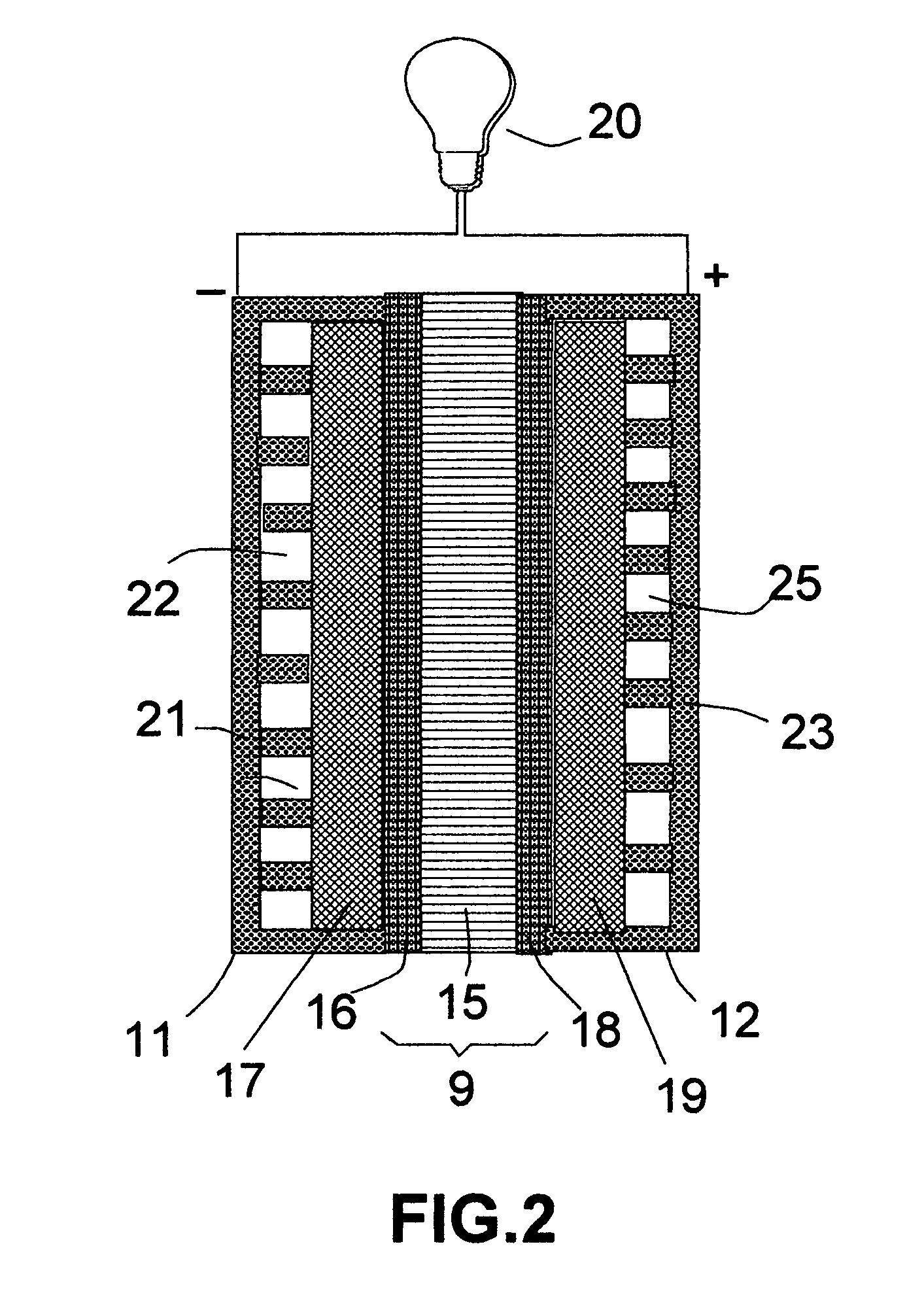Twin-wire arc deposited electrode, solid electrolyte membrane, membrane electrode assembly and fuel cell
a technology of membrane electrodes and deposited electrodes, which is applied in the direction of cell components, electrochemical generators, cell component details, etc., can solve the problems of relatively high cost of fabricating electrodes, and high cost of current pem fuel cells. , to achieve the effect of convenient operation
- Summary
- Abstract
- Description
- Claims
- Application Information
AI Technical Summary
Benefits of technology
Problems solved by technology
Method used
Image
Examples
example 1
[0074] Metal rods of Cu, Fe, Ti, Ni, Pt and Au each of {fraction (1 / 8)} inches diameter were used as a precursor catalyst material. This arc electrodes were shielded by 25-100 cfh of a working gas of argon combined with 5-100% nitrogen and / or 5-50% hydrogen. The current of the arc was adjusted between approximately 100 and 450 amps, which generated an arc tail flame 1-4 inches long that evaporated the precursor catalyst material. The arc created a stream of metal vapor clusters of 1-200 g / hr while an argon flow of 10-1000 cfh was injected into the tail flame to carry the metal vapor clusters toward a non-woven carbon fiber layer (as a porous air-permeable fuel cell anode). The micro-structure of the resulting catalyst layer was typically characterized by exhibiting catalyst particle sizes in the range of 1-20 nm.
example 2
[0075] Metal rods of Ru-coated Cu, Fe, Ti, and Ni each of {fraction (1 / 8)} inches diameter were used as a precursor catalyst material. This arc cathode was shielded by 25-100 cfh of a working gas of argon combined with 5-100% nitrogen and / or 5-50% hydrogen. The current of the arc was adjusted between approximately 100 and 450 amps, which generated an arc tail flame 1-4 inches long that evaporated the precursor catalyst material. The arc created a stream of metal vapor clusters of 1-200 g / hr while an oxygen flow of 10-1000 cfh was injected into the tail flame to form oxide clusters of the starting metal. These oxide clusters were directed to deposit onto a porous copper plate to form a catalytic oxide layer therein. The micro-structure of the resulting catalyst coatings was typically characterized by particle sizes in the range of 1-15 nm. These transition metal oxide nano particles are effective fuel cell cathode catalysts.
example 3
[0076] The same precursor catalyst metals and same deposition procedures as in EXAMPLE 2 were used to deposit an oxide based catalyst layer onto two major surfaces of a solid oxide electrolyte, which was yttrium oxide stabilized zirconium oxide (YSZ). This solid electrolyte layer was sandwiched between two porous electrodes that were composed of a mixture of YSZ and nickel metal to make a membrane-electrode assembly for a solid oxide fuel cell.
PUM
| Property | Measurement | Unit |
|---|---|---|
| weight | aaaaa | aaaaa |
| weight | aaaaa | aaaaa |
| particle size | aaaaa | aaaaa |
Abstract
Description
Claims
Application Information
 Login to View More
Login to View More - R&D
- Intellectual Property
- Life Sciences
- Materials
- Tech Scout
- Unparalleled Data Quality
- Higher Quality Content
- 60% Fewer Hallucinations
Browse by: Latest US Patents, China's latest patents, Technical Efficacy Thesaurus, Application Domain, Technology Topic, Popular Technical Reports.
© 2025 PatSnap. All rights reserved.Legal|Privacy policy|Modern Slavery Act Transparency Statement|Sitemap|About US| Contact US: help@patsnap.com



